above: English Scurvy-grass (Cochlearia anglica) © Alvan White
Leader Alvan White
On a grey day with no sunshine, ten members set off along the River Brue. The temperature was above 10C, and had been for a few days. One garden along Clyst Road was spectacular with colour from Cyclamen whilst daffodils were in flower as well.
We stopped at the sluice, to look down the Brue, which revealed a small flock of Teal and some Redshank. Redshank were probably the commonest birds on the whole trip.
Once out into open space, there before us was a thick growth of Teasels with a charm of Goldfinches feeding on the seeds. A further visual feast then quickly occurred with a small flock of Long Tailed Tits feeding close up on bird feeders.
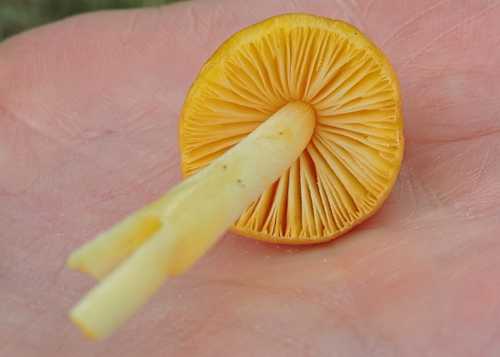
Yellow Field Cap (Bolbitius titubans) © Alvan White
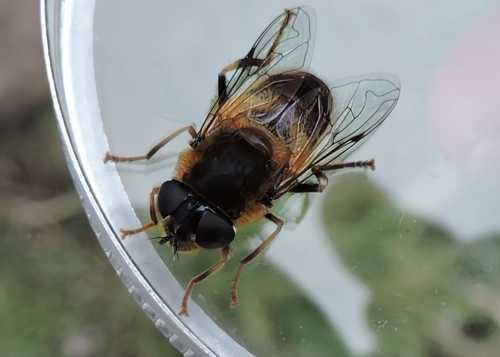
Tapered Drone Fly (Eristalis pertinax) © Alvan White
Alan showed us a sample of Hornschuch’s Beard-moss (Pseudocrossidium hornschuchianum), a type of moss. He later confirmed the presence of the fungus Yellow Field Cap (Bolbitius titubans).
The group just missed a couple of Kingfishers fishing from perches in one of the riverside ponds. However we did have a flyby over the reeds by one of them. A male Cetti’s Warbler had been heard earlier but the group did not have the pleasure of hearing the song.
Little was in flower along the riverbank but an occasional Alexanders plant was in bloom and the inflorescence held a few insects. The most common was Yellow Dungfly (Scathophaga stercoraria) but a single Tapered Drone Fly (Eristalis pertinax) was present. Perhaps the star, albeit diminutive, was a bright yellow and black 22 spot ladybird (Psyllobora vigintiduopunctata).
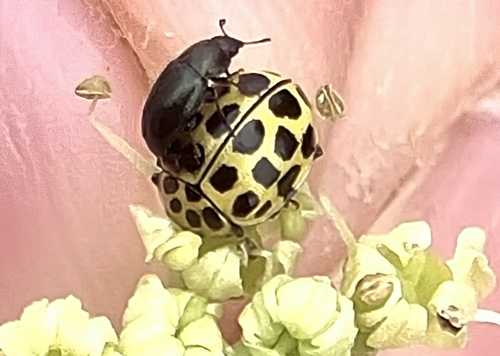
22 spot ladybird and possible Meligethes sp. one of a number of very similar pollen beetles © William Harrison
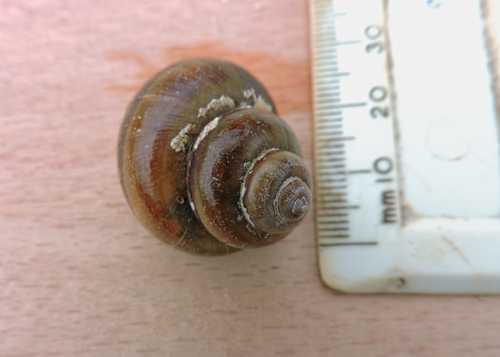
Lister’s River Snail (Viviparus contectus) © Alvan White
Meanwhile Tom was adding to the bird list through his telescope to include Turnstones, Shelduck, an odd Dunlin, Great Black Backed Gull and a Curlew or two.
I examined the river strand line and found species washed down the Brue. A large freshwater snail species Lister’s River Snail (Viviparus contectus), plus the Great Ramshorn (Planorbarius corneus).
Rob identified a few salt marsh plants to include English Scurvy-grass (Cochlearia anglica), Sea Plantain (Plantago maritima), and Sea Purslane (Atriplex portulacoides). Sea Scurvy acquired its common name from the observation that it cured scurvy, and it was taken on board ships in dried bundles or distilled extracts. Its very bitter taste was usually disguised with herbs and spices.
It was a very enjoyable meeting and great thanks to Alan, Rob, Jackie and Tom for their expertise and to the latter for showing the birds through his telescope.
It is hoped to do more trips by train. It was lucky that no hitches occurred.
Alvan White

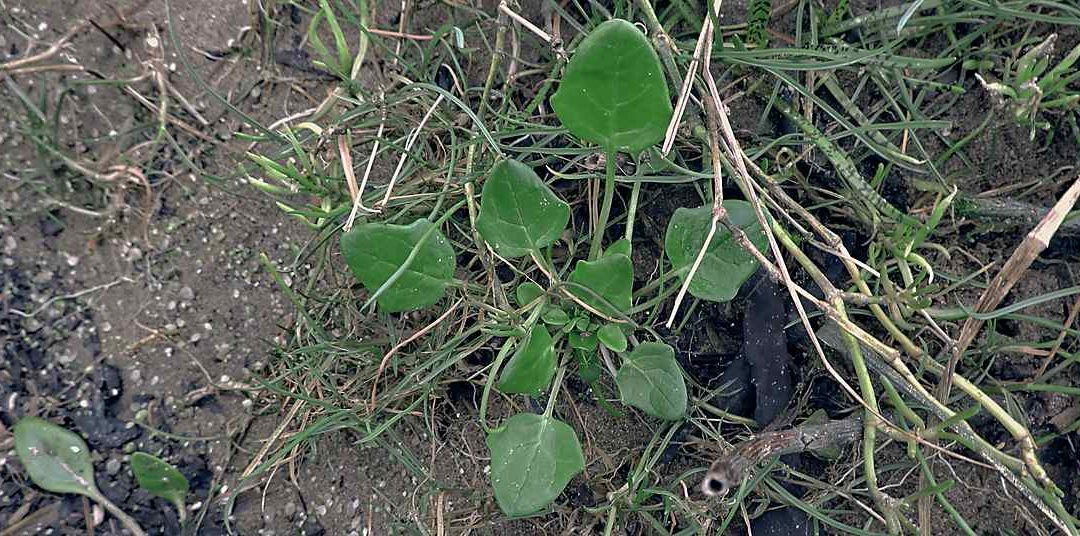
Recent Comments